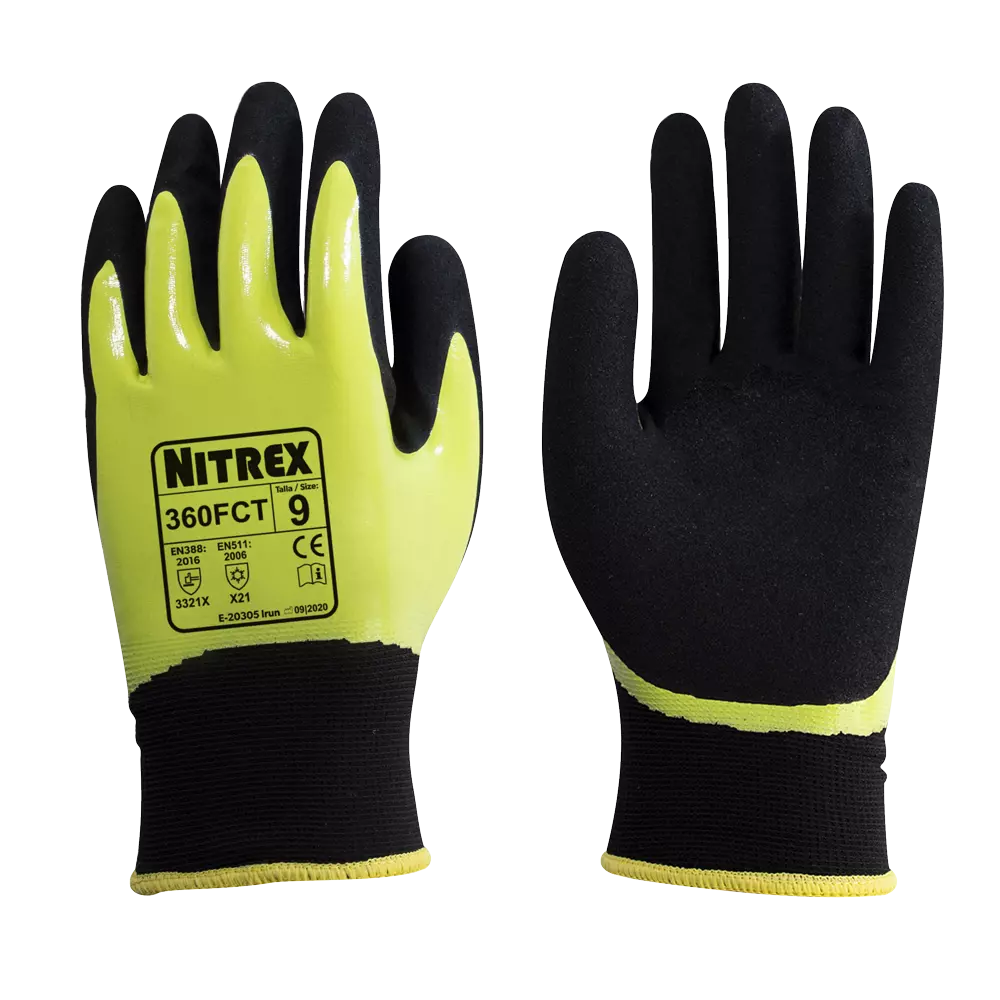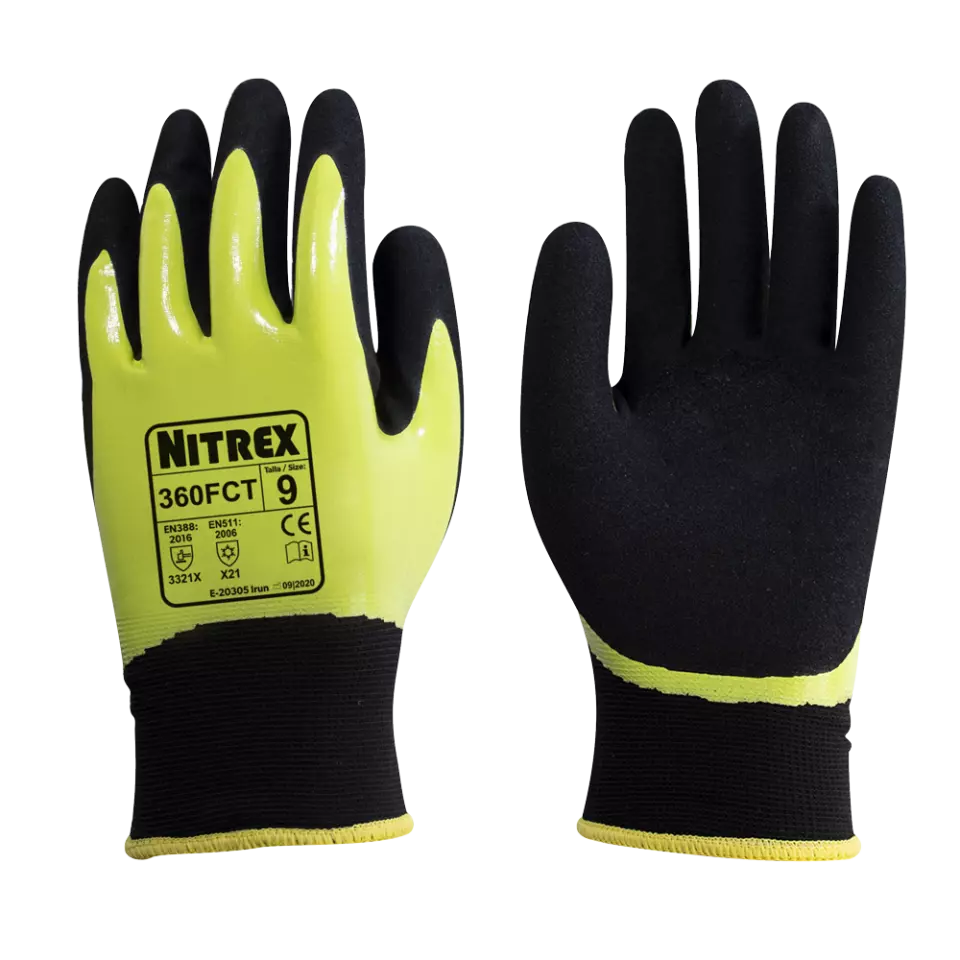
Features You'll Love

Palm Material · Nitrile
Grip Finish · Sandy
The material used on the palm side of the glove, affecting grip, durability, protection level, and comfort during use.
The surface texture or coating on the palm and fingers that determines how securely the gloves can grip tools, materials, and surfaces during work tasks.

EN 388 · Puncture Resistance Level 1, Cut Resistance, Coup Test Level 3, Abrasion Resistance Level 3, Tear Resistance Level 2
EN 511 · Cold Contact Level 2, Water Tightness Level 1
Provides basic protection against punctures from blunt objects like splinters, not sharp points like needles.
Offers moderate protection against cuts from materials like sheet metal and other sharp-edged objects.
Provides good resistance against scraping, scratching, and rubbing on rough or abrasive surfaces.
Offers moderate resistance against snagging or catching on rough objects, preventing small rips from growing.
This glove provides good insulation when directly handling cold objects for a moderate duration. It's ideal for tasks like working in cold stores or handling chilled or frozen items, offering a solid mid-range of thermal protection.
This product provides protection against water penetration, keeping your hands dry in wet conditions. It has passed a test where the glove is submerged in water for 30 minutes without any water leaking through.
Nitrex
Black acrylic lined double dipped nitrile glove, 100 pairs
Black acrylic lined double dipped nitrile glove, 100 pairs
4.8 / 5
93,23 €
Price per 10 packages (100 pairs)
0,93 € / pair
Choose size
Free delivery
Features You'll Love

Palm Material · Nitrile
Grip Finish · Sandy
The material used on the palm side of the glove, affecting grip, durability, protection level, and comfort during use.
The surface texture or coating on the palm and fingers that determines how securely the gloves can grip tools, materials, and surfaces during work tasks.

EN 388 · Puncture Resistance Level 1, Cut Resistance, Coup Test Level 3, Abrasion Resistance Level 3, Tear Resistance Level 2
EN 511 · Cold Contact Level 2, Water Tightness Level 1
Provides basic protection against punctures from blunt objects like splinters, not sharp points like needles.
Offers moderate protection against cuts from materials like sheet metal and other sharp-edged objects.
Provides good resistance against scraping, scratching, and rubbing on rough or abrasive surfaces.
Offers moderate resistance against snagging or catching on rough objects, preventing small rips from growing.
This glove provides good insulation when directly handling cold objects for a moderate duration. It's ideal for tasks like working in cold stores or handling chilled or frozen items, offering a solid mid-range of thermal protection.
This product provides protection against water penetration, keeping your hands dry in wet conditions. It has passed a test where the glove is submerged in water for 30 minutes without any water leaking through.
Product description
The product description has not been specified